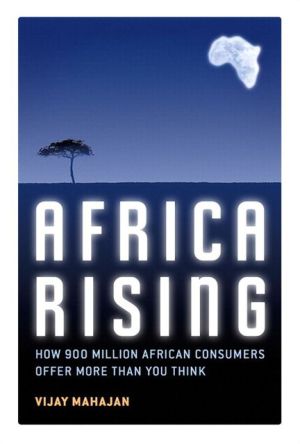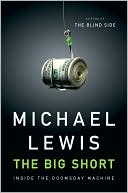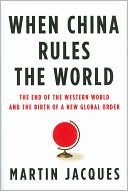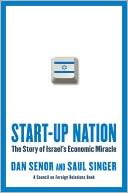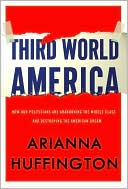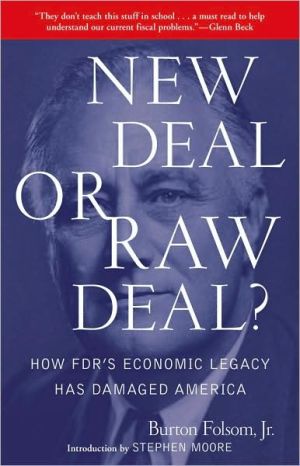Africa Rising: How 900 Million African Consumers Offer More Than You Think
With more than 900 million consumers, the continent of Africa is one of the world’s fastest growing markets. In Africa Rising, renowned global business consultant Vijay Mahajan reveals this remarkable marketplace as a continent with massive needs and surprising buying power.\ Crossing thousands of miles across the continent, he shares the lessons that Africa’s businesses have learned about succeeding on the continent...shows how global companies are succeeding despite Africa’s unique...
Search in google:
Profit from the World’s Largest Untapped Market: Africa’s MORE THAN 900 MILLION Consumers! “This book lays out a powerful portrait of the growing opportunities in Africa. It is clear to us that any global firm interested in growth must see Africa as an essential part of its portfolio.” --E. Neville Isdell, Chairman and Chief Executive Officer, The Coca-Cola Company, USA “While we consider Africa one of our most important markets, we are very aware that it is often overlooked as a place to conduct sustainable business. This book shows that Africa offers opportunities equal to other developing regions that receive more attention. Through the Diageo Africa Business Reporting Awards, we have committed to promoting high-quality coverage of the business environment in Africa. This book makes an important contribution in providing a vivid picture of the African market opportunity.” --Paul Walsh, Chief Executive Officer, Diageo, UK “This book presents a compelling argument for waking up to the potential of a continent with a population of over 900 million and a high rate of growth. The African continent is rich in natural resources and presents opportunities across a wide cross-section of industrial and commercial areas for companies with appropriate business strategies and a genuine commitment to improving the quality of life of the local population.” --Ratan N. Tata, Chairman, Tata Group, India “Unilever has invested in Africa for over a century and is committed to buildingstrong market positions in the region by meeting the needs of African consumers. As this book highlights, the opportunities for consumer goods companies are considerable and the potential to do business in Africa is much greater than many companies realize.” --Patrick Cescau, Global CEO, Unilever, UK “Bravo. The timing of this book is perfect. It will be much quoted. I especially like how Professor Mahajan uses the voices of Africans to bring it to life, alongside the research.” --Barbara James, former Managing Director of the African Venture Capital Association and founder of the Henshaw Funds, the first independent pan-African private equity Fund of Funds, Nigeria/UK With more than 900 million consumers, the continent of Africa is one of the world’s fastest growing markets. In Africa Rising, renowned global business consultant Vijay Mahajan reveals this remarkable marketplace as a continent with massive needs and surprising buying power. Crossing thousands of miles across the continent, he shares the lessons that Africa’s businesses have learned about succeeding on the continent...shows how global companies are succeeding despite Africa’s unique political, economic, and resource challenges...introduces local entrepreneurs and foreign investors who are building a remarkable spectrum of profitable and sustainable business opportunities even in the most challenging locations...reveals how India and China are staking out huge positions throughout Africa...and shows the power of the diaspora in driving investment and development. Recognize that Africa is richer than you thinkAfrica is richer than India on the basis of gross national income (GNI) per capita, and a dozen African countries have a higher GNI per capita than China. Aim for Africa TwoOpportunities exist in all parts of the market, particularly the 400 million people in the middle of the market. Find opportunities to organize the marketFrom retailing to cell phones to banking, companies are succeeding by building infrastructure. Develop strategies for the most youthful market in the worldCompanies are recognizing opportunities from diapers to music to medicine in a market growing younger every day. Understand that Africa is not a “media dark” continentFrom Nollywood to satellite to broadband, media is exploding on the continent. Recognize the hidden strength of the African diaspora The African diaspora brings resources and knowledge to African development and expands the African opportunity beyond the continent. Build Ubuntu marketsCreate profitable businesses, sustainable growth, and social organizations by meeting basic human needs. Publishers Weekly Africa, like many emerging markets, has been long overlooked, but is poised for explosive growth and opportunity, says author Mahajan (The 86 Percent Solution) in this must-read for investors, executives and anyone with an interest in global business. He argues that Africa "is richer than you think" and presents "as big an opportunity as China and India." The author describes a burgeoning middle class, referred to as "Africa Two," and illustrates how successful companies are organizing the marketplace, creating infrastructure, advertising, and even customizing packaging. In a continent where many countries lack basic resources and transportation, Mahajan admits it would be easy for investors or corporations to discount prospects for profitability, but he describes how creative entrepreneurs have identified these problems as opportunities: the Coca-Cola Company uses trucks, bicycles and handcarts to transport its product into rural villages and is building its own ice plant to keep drinks cool during power outages. This compelling and captivating overview of the market with its colorful anecdotes provides a tremendous insight into Africa's wealth, which Mahajan calls a "different type of oil and diamonds." Copyright © Reed Business Information, a division of Reed Elsevier Inc. All rights reserved.
Preface Preface: Consumer Safari\ I have to admit that until a few years ago, I was guilty of overlooking Africa. My book on emerging markets, The 86% Solution, included only a few African examples. As a professor of marketing at the University of Texas, I have extensive experience working with companies in Latin America. I have traveled and lectured extensively in Asia and the Middle East. Like most scholars in the developed world, however, I saw Africa more as a charity case than a market opportunity. I was wrong, and this book is here to set the record straight.\ It is particularly surprising to me that I failed to recognize the story in Africa because I remember when India was discussed in the same way. As Ramachandra Guha recently wrote in a book review in the Financial Times, “Western writers of the 1960s warned their readers that India was a losing proposition, the laboratory, as it were, of failed experiments in democracy and nation-building.”1 He could be writing about Africa today. In fact, one of the reasons I started writing about opportunities in emerging markets was because of a conversation I had with a colleague for a panel considering how we could stop the developing world from “begging.” As the son of an entrepreneur, I found this shocking and insulting. I knew that entrepreneurship is alive and well in India. But when I told colleagues a decade or two ago that India would be an important global market, they were incredulous. They are incredulous no longer.\ I have experienced the transformations in India firsthand. I was born in Jammu City in the state of Jammu and Kashmir a few months after Mahatma Gandhi was assassinated and India became a republic. I became part of a generation that Salman Rushdie called “Midnight’s Children,” referring to those who lived through the transformational time after the independence of India at midnight on August 15, 1947. In 2002, I had the opportunity to return to India as dean of the Indian School of Business in Hyderabad. I saw how a country that had been written off as a charity case was now seen as a powerful emerging market.\ Now I see the same view of Africa. Despite all the attention it has received for its social, medical, humanitarian, and political challenges, it is still undervalued as a consumer market. I set out to rectify my own lack of knowledge about the continent and to understand the market opportunity it presents—in all its rich complexity and wealth. I traveled thousands of miles across Africa and met with or interviewed leaders of major African companies, smaller entrepreneurs, and Asian and Western firms with long experience on the continent. I have had the opportunity to meet some truly extraordinary and creative business leaders. I feel blessed for the opportunity to do this in the autumn of my life. I learned important lessons from these many teachers, which I share in this book.\ As I was finishing this book, President George Bush announced in February 2008 the launch of five funds through the U.S. Overseas Private Investment Corporation, totaling $875 million, for investment in Africa. On the eve of his trip to Benin, Tanzania, Rwanda, Ghana, and Liberia, he stated a conclusion that I had reached in my own journeys through Africa in the preceding years. “This new era is rooted in a powerful truth: Africa’s most valuable resource is not its oil, it’s not its diamonds, it is the talent and creativity of its people.” The true wealth of Africa is its more than 900 million consumers, and its countless entrepreneurs and business leaders who are already demonstrating the wealth of the continent by building successful enterprises. If you look beyond the headlines, these individuals are propelling the rise of Africa. They are building businesses, economies, and societies. They are the hidden natural resource that may present greater opportunities than oil or minerals in the long run.\ I am not a political scholar. I am not an economist. I am a marketing professor, so my focus is on the market opportunity. There will soon be a billion consumers on the continent of Africa, and this is one of the fastest growing markets in the world. Every day, they need to eat. They need shelter. They want education for their children. They would like to have soaps to wash their clothes. They desire cell phones, metal roofs for their homes, televisions, music, computers, movies, bicycles, cosmetics, medicines, cars, and loans to start businesses. They celebrate marriages, births, and religious holidays and commemorate death.\ I have sought to learn as much as I possibly could about the African market—what it offers, how it is structured, and its potential. Others have looked at Africa through a political lens, some have engaged in economic analysis, some have examined its complex history, and others have looked at medical or social challenges. A few have even started telling the stories of specific African businesses. But my focus is on understanding the continent through the perspective of the consumer. What is the African market? What opportunities does it offer? How are companies recognizing and realizing the opportunities in Africa’s rising?\ Many tourists come to Africa every year to see the big game there—the elephants, lions, and rhinos. But I came for a different type of big game. I was seeking out the successful enterprises that are identifying and capitalizing on the market opportunities, and seeking lessons from those that are not so successful, too.\ In Nairobi, Maserame Mouyeme\ of The Coca-Cola Company told me how important it is “to walk the market.” Then, in Harare, I first heard the term “consumer safari” in a meeting with Unilever executives. This is what they call their initiatives to spend a day with consumers in their homes to understand how they use products. Years after I started on this journey, I now had a term to describe the quest I was on. I was on a consumer safari. The market landscape that is Africa is every bit as marvelous and surprising as its geographic landscape. It presents as big an opportunity as China and India. On the following pages, I invite you to come along on this safari. I think it will change your view of Africa, as it has changed mine, and perhaps your view of where the future global market opportunities—and future wealth—can be found.\ Vijay Mahajan University of Texas at Austin March 2008\ © Copyright Pearson Education. All rights reserved.
Preface: Consumer SafariPt. I The African OpportunityCh. 1 Baking Bread in Zimbabwe 3Ch. 2 Africa Is Richer Than You Think 29Ch. 3 The Power of Africa Two 57Pt. II Realizing the OpportunityCh. 4 Harnessing the Hanouti: Opportunities in Organizing the Market 77Ch. 5 Building Mama Habiba an Ice Factory: Opportunities in Infrastructure 105Ch. 6 Running with the Cheetah Generation: Opportunities in Africa's Youth Market 127Ch. 7 Hello to Nollywood: Opportunities in Media and Entertainment 147Ch. 8 Coming Home: Opportunities in the African Diaspora 167Conclusion: Ubuntu Market 187Endnotes 221Acknowledgments 239Index 247
\ Publishers WeeklyAfrica, like many emerging markets, has been long overlooked, but is poised for explosive growth and opportunity, says author Mahajan (The 86 Percent Solution) in this must-read for investors, executives and anyone with an interest in global business. He argues that Africa "is richer than you think" and presents "as big an opportunity as China and India." The author describes a burgeoning middle class, referred to as "Africa Two," and illustrates how successful companies are organizing the marketplace, creating infrastructure, advertising, and even customizing packaging. In a continent where many countries lack basic resources and transportation, Mahajan admits it would be easy for investors or corporations to discount prospects for profitability, but he describes how creative entrepreneurs have identified these problems as opportunities: the Coca-Cola Company uses trucks, bicycles and handcarts to transport its product into rural villages and is building its own ice plant to keep drinks cool during power outages. This compelling and captivating overview of the market with its colorful anecdotes provides a tremendous insight into Africa's wealth, which Mahajan calls a "different type of oil and diamonds." \ Copyright © Reed Business Information, a division of Reed Elsevier Inc. All rights reserved.\ \ \ \ \ Library JournalMahajan (McCombs Sch. of Business, Univ. of Texas, Austin) here revisits The 86 Percent Solution: How To Succeed in the Biggest Marketing Opportunity of the 21st Century, a book he coauthored with Kamini Banga, advocating that there is a ripe market in the 86 percent of the earth's population located in the Third World, a demographic largely ignored by modern companies. Now he specifically addresses Africa, noting that there are 900 million potential consumers who fall into two broad groups. The "Black Diamond" group consists of 500 million Africans who are newly at or near a middle-class income. The other group is made up of the destitute who, the author points out, must still buy staples like rice, soap, and cooking oil. The first group is ready for traditional consumer purchases such as televisions, refrigerators, and automobiles. The second is primed to have small profits leveraged through modern organization and distribution methods. The author concludes that Africa today is where China and India, now attractive markets, were 20 years ago. Unfortunately, Mahajan relies primarily on anecdotal evidence, asking the reader to accept inductive leaps that aren't clearly supported by the text. Possibly appropriate for institutions with large undergraduate marketing programs.\ —Robert Perret\ \ \
